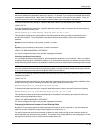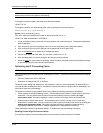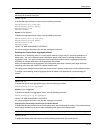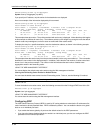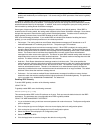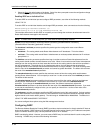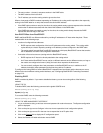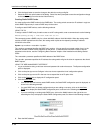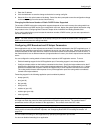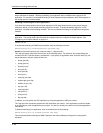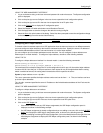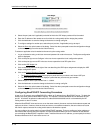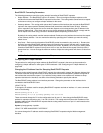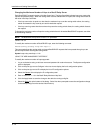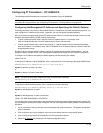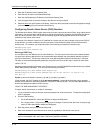
Configuring IP
7. Enter the IP address.
8. Click the Add button to save the change to the device’s running-config file.
9. Select the Save
link at the bottom of the dialog. Select Yes when prompted to save the configuration change
to the startup-config file on the device’s flash memory.
Changing the Maximum Number of Static RARP Entries Supported
The number of RARP entries the routing switch supports depends on how much memory the routing switch has.
To determine how many RARP entries your routing switch can have, display the system default information using
the procedure in the “Configuring Basic Features” chapter of the Installation and Getting Started Guide.
If your routing switch allows you to increase the maximum number of RARP entries, you can use a procedure in
the same section to do so.
NOTE: You must save the configuration to the startup-config file and reload the software after changing the
RARP cache size to place the change into effect.
Configuring UDP Broadcast and IP Helper Parameters
Some applications rely on client requests sent as limited IP broadcasts addressed to the UDP’s application port. If
a server for the application receives such a broadcast, the server can reply to the client. Routers do not forward
limited broadcasts, so the client and server must be on the same network for the broadcast to reach the server. If
the client and server are on different networks (on opposite sides of a router), the client’s request cannot reach the
server.
You can configure the routing switch to forward clients‘ requests to UDP application servers. To do so:
• Enable forwarding support for the UDP application port, if forwarding support is not already enabled.
• Configure a helper adders on the interface connected to the clients. Specify the helper address to be the IP
address of the application server or the limited broadcast address for the IP sub-net the server is in. A helper
address is associated with a specific interface and applies only to client requests received on that interface.
The routing switch forwards client requests for any of the application ports the routing switch is enabled to
forward to the helper address.
Forwarding support for the following application ports is enabled by default.
• bootps (port 67)
• dns (port 53)
• tftp (port 69)
• time (port 37)
• netbios-ns (port 137)
• netbios-dgm (port 138)
• tacacs (port 65)
NOTE: The application names are the names for these applications that the routing switch software recognizes,
and might not match the names for these applications on some third-party devices. The numbers listed in
parentheses are the UDP port numbers for the applications. The numbers come from RFC 1340.
NOTE: As shown above, forwarding support for BootP/DHCP is enabled by default. If you are configuring the
routing switch to forward BootP/DHCP requests, see “Configuring BootP/DHCP Forwarding Parameters” on
page 6-70.
You can enable forwarding for other applications by specifying the application port number.
You also can disable forwarding for an application.
6 - 67



